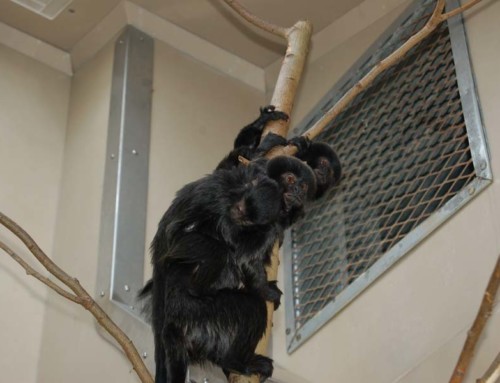Bzzzzz Bzzzzz Bzzzzz
By: Claire Bullaro
Did you know that in the three Prairie Provinces there are over 300 different species of native bees, not including the introduced honey bee? The Prairies represent the most diverse area of bee species in Canada. Bees are dependent on pollen and nectar so they need habitats that are rich in floral life. They also need suitable nesting sites and materials for nesting and surviving the winter.
Before the Prairies were converted to farmland with agricultural crops, plant diversity was the largest in the country. Most of that is gone now. We are still fortunate to have a few untouched areas of native prairie, but luckily many bees have adapted to the changes in flora available.
There will be a new exhibit at the Zoo this year highlighting three bee species that are mostly solitary – they do not live in large hives and generally do not produce products that humans can exploit like honey and wax, but they are extremely important for pollinating many of our grain crops, fruit trees and shrubs, flowers, and vegetables. All three species nest or over-winter in hollow stems of plants of various types. Bee “hotels” are often sold in stores lately to encourage these important pollinators to stay around in our gardens and fields. Some species are quite particular in the diameter of hollow stems that they prefer. There are videos on-line showing how to make your own bee hotel and where to place it in your yard to encourage them to visit and to keep the bees safe.
First on our list – Ceratina bees also known as Carpenter Bees. They are black, bluish-green, or blue and about 8 millimeters in length. They use broken or burnt plant stems and twigs that they excavate with their mandibles (jaws), often using elder or sumac stems which are pithy. Pithy stems have a soft spongy centre that is easy to chew into sections. Some of their favoured plants to gather pollen from are raspberries, goldenrod, mustard, safflower, sunflowers, and flax. The females will chew down into a stem to hide over winter and in the spring will then use that stem for depositing eggs with a ball of pollen for each of the developing bees. The life-span of up to two years makes them a fairly long-lived bee species.
Next are the Leaf-Cutter Bees, Megachile. If you have ever seen a leaf of your roses, lilac, green ash, or Virginia Creeper with a nice semi-circular piece cut out of it you have seen the work of a Leaf-Cutter Bee. The females use the leaf pieces to line their nests along with a bit of pollen and nectar to feed the larvae. These bees also use hollow plant stems for their nests. They are important pollinators of summer flowers, vegetables, and herbs and are now domesticated for their value in pollinating alfalfa. Some have been exported to Eastern Canada to help pollinate cranberry crops.
Finally, are the Mason or Orchard Bees, Osmium. As the Orchard name implies these bees are important for the pollination of many types of fruit trees. The Mason name indicates that they will use mud or soft clay to make the sections of their nests in hollow twigs that they will lay eggs in. The bees are usually a dark metallic blue in colour. Mason bees will carry the pollen that they collect on their abdomens unlike honeybees that carry pollen on their hind legs. While they are solitary bees and they do not live in hives, they will build nests near each other.
Bees, like all living things, are extremely susceptible to pesticides and herbicides and the use and over-use of them are having severe effects on native and non-native bees. Without bees and other pollinating insects we will not have the foods we need to survive as a species.
From Nature Conservancy Canada:
According to the Food and Agriculture Organization of the United Nations, “The global decline in bee populations poses a serious threat to a wide variety of plants critical to human well-being and livelihoods, and countries should do more to safeguard our key allies in the fight against hunger and malnutrition.” Basically, we need to do more for the bees.



